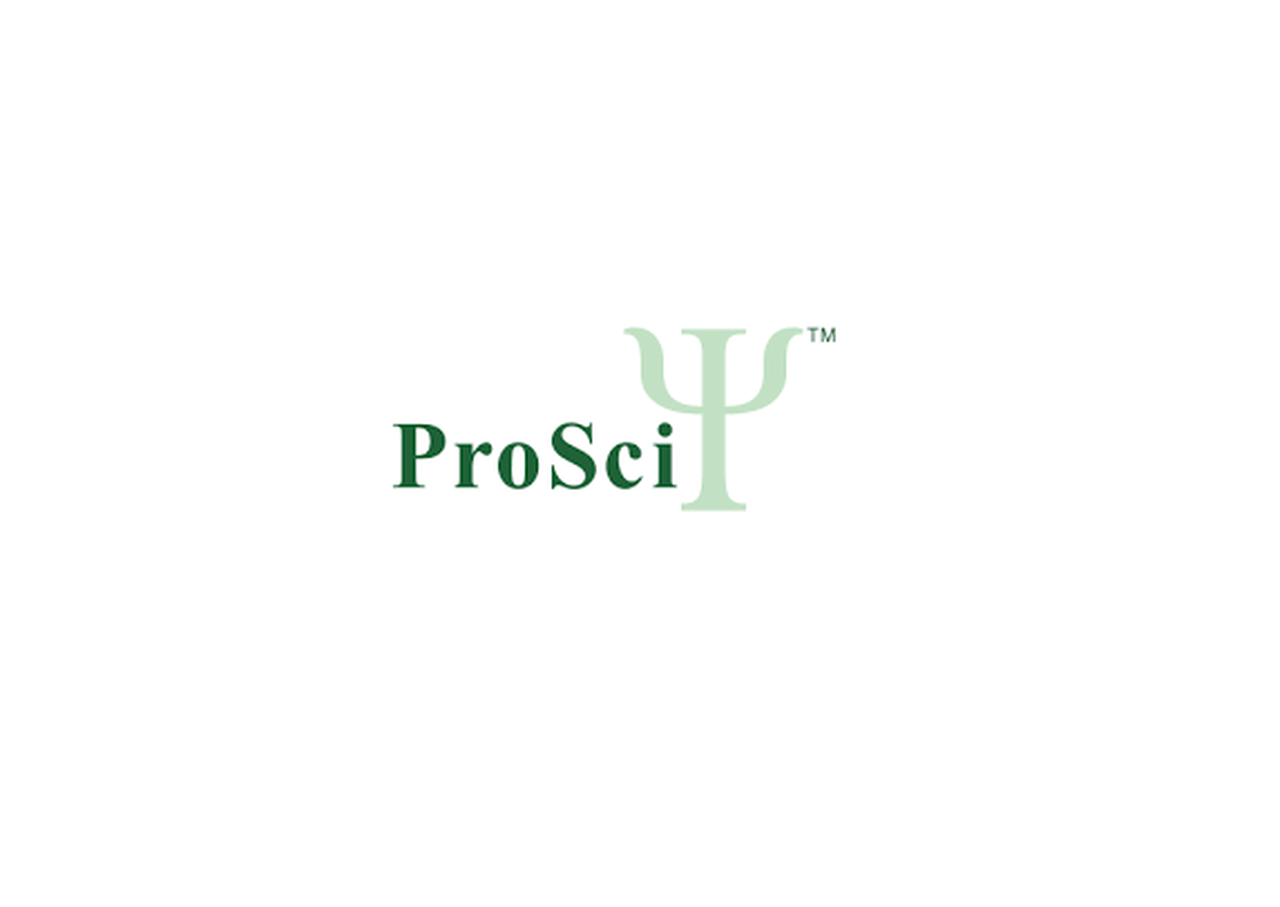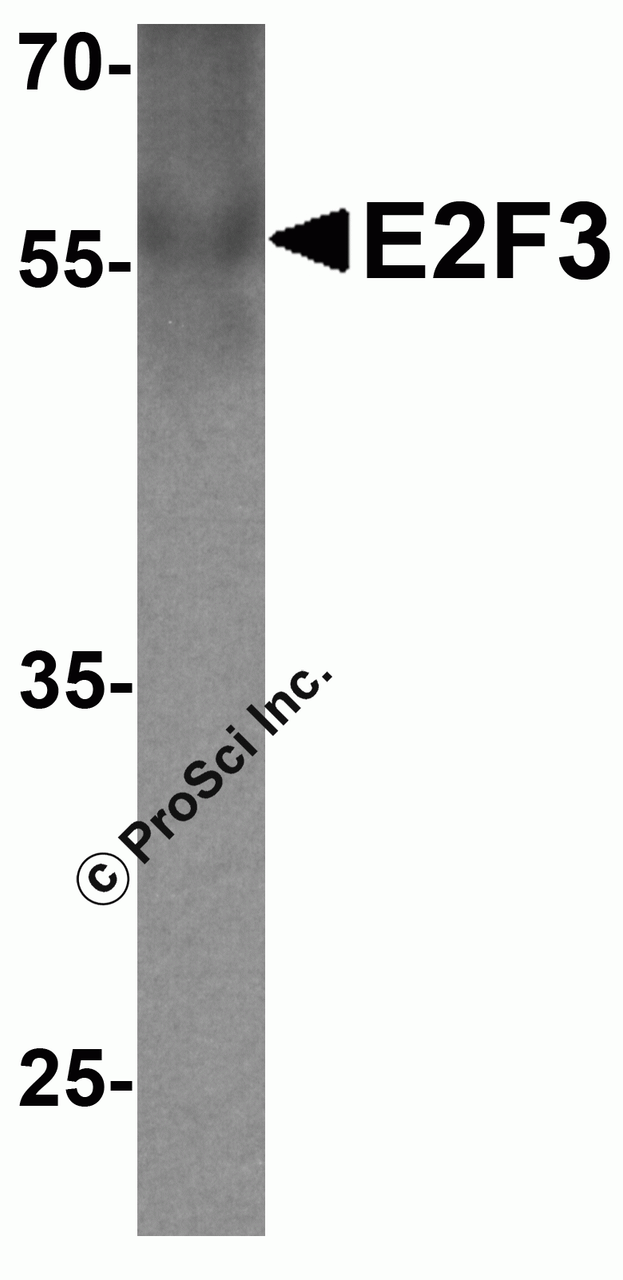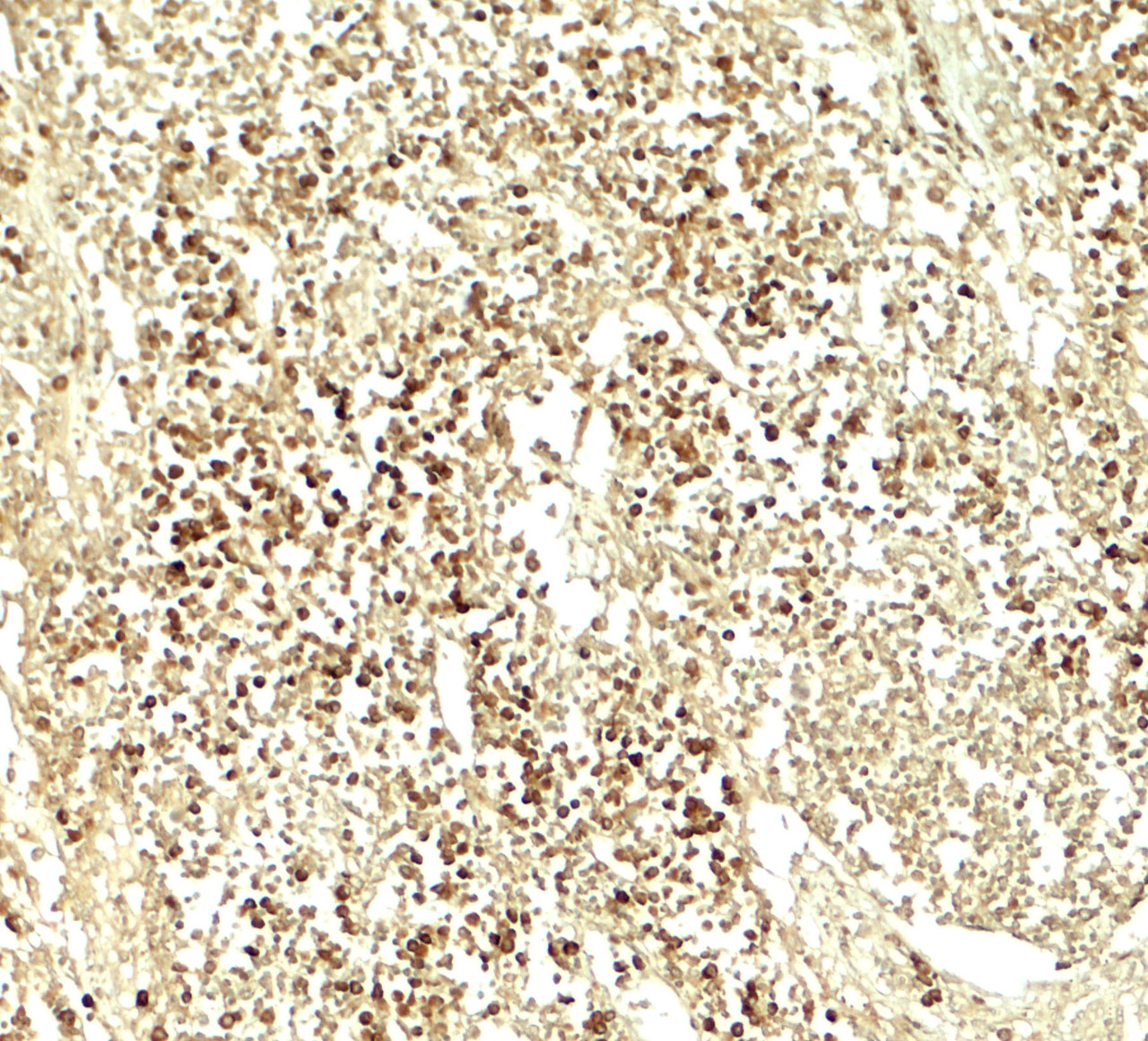Product Description
E2F3 Antibody | 7929 | ProSci
Host: Rabbit
Reactivity: Human, Mouse
Homology: N/A
Immunogen: E2F3 antibody was raised against a 15 amino acid peptide near the center of human E2F3.
The immunogen is located within amino acids 150 - 200 of E2F3.
Research Area: Cancer, Cell Cycle
Tested Application: E, WB, IHC-P, IF
Application: E2F3 antibody can be used for detection of E2F3 by Western blot at 1 - 2 μg/ml. Antibody can also be used for Immunohistochemistry starting at 5 μg/mL. For immunofluorescence start at 20 μg/mL.
Antibody validated: Western Blot in human samples; Immunohistochemistry in human samples and Immunofluorescence in human samples. All other applications and species not yet tested.
Specificiy: E2F3 antibody is human and mouse reactive. At least three isoforms of E2F3 are known to exist; this antibody will detect only the largest isoform. This antibody is predicted to not cross-react with other members of the E2F transcription factor family.
Positive Control 1: Cat. No. 1369 - Human Lymph node Tissue Lysate
Positive Control 2: Cat. No. 11-521 - Human Lymphoid Tissue Tissue Slide
Positive Control 3: N/A
Positive Control 4: N/A
Positive Control 5: N/A
Positive Control 6: N/A
Molecular Weight: Predicted: 51 kDa
Observed: 56 kDa
Validation: N/A
Isoform: N/A
Purification: E2F3 antibody is affinity chromatography purified via peptide column.
Clonality: Polyclonal
Clone: N/A
Isotype: IgG
Conjugate: Unconjugated
Physical State: Liquid
Buffer: E2F3 antibody is supplied in PBS containing 0.02% sodium azide.
Concentration: 1 mg/mL
Storage Condition: E2F3 antibody can be stored at 4˚C for three months and -20˚C, stable for up to one year.
Alternate Name: E2F transcription factor 3, E2F-3
User Note: Optimal dilutions for each application to be determined by the researcher.
BACKGROUND: The E2F transcription factor 3 (E2F3) is a member of a small family of transcription factors that function through binding of DP interaction partner proteins. E2F3 recognizes a specific sequence motif in DNA and interacts directly with the retinoblastoma protein (pRB) to regulate the expression of genes involved in the cell cycle (1) . Like the related E2F1 and E2F2, E2F3 is essential for cellular proliferation and progression through the cell cycle (2) . Altered copy number and activity of this gene have been observed in a number of human cancers (3) .
 Euro
Euro
 USD
USD
 British Pound
British Pound
 NULL
NULL












